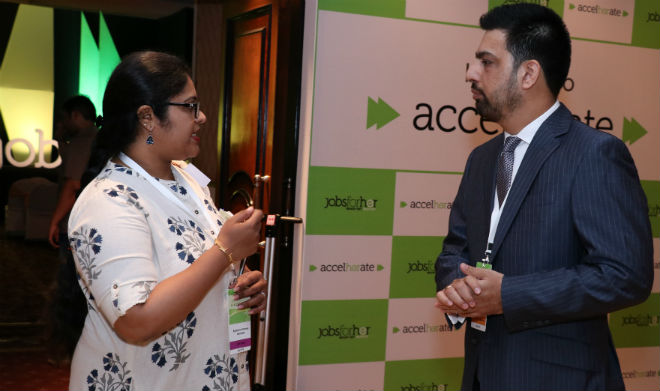A director in the Investment Banking Division at Barclays India, Ashok Lodha is also co-chair for Win, the gender network. He is a passionate advocate for diversity and inclusion, as well as a key driver of various mentoring initiatives within the organisation. We talked to him about the challenges and opportunities of creating greater diversity and the powerful role of male allies in shifting attitudes and creating real change.
Why are you so passionate about gender diversity and being involved in the conversation?
I’ve worked in banks throughout my career and have been involved in D&I initiatives since 2004, although I am not a D&I lead. My involvement is my passion, over and above the teams I have been running here at Barclays for the past five years.
Diversity is a broad term, obviously, and not just about gender – but this area has remained close to my heart. I thought there was a huge gap and a need for men, in particular, to come forward and take a lead. I also have a personal interest – my daughter is growing up and interested in so many things, including traditionally male-dominated areas. So I thought, “the world needs to change!”
You are the Chair for Win, the gender network in Mumbai – what is your aim for this initiative?
Win was originally a ‘by women for women’ network and initially, my role was just as a supporter. When I took over this network at Barclays in 2015 and became Chair for Win in Mumbai, I turned it into a gender-focused network because we need to involve more men if we are to further an agenda of diversity.
The more leaders and senior people who are involved in initiatives like this, the more junior people will follow. Leaders need to walk the walk if we really want to see the needle move. In India, we’re good at starting initiatives, but when it comes to actually setting those examples we often take the easy route.
What changes have you seen while you have been involved in D&I?
Often leaders are given an objective to have a certain amount of gender diversity in their organisation. We won’t see real change though until people are on board and these decisions are not boxes that need to be checked.
In 2015, Barclays became a founding member of the UN Women campaign HeForShe and with initiatives like this, we are trying to create the culture of a diverse organisation, because banking remains a male-dominated industry. We are telling our male colleagues that we all have a task on hand to bring in diversity.
I have personally seen a lot of changes for the better in my own organisation when we have hired a lot of female colleagues – in culture, mindset, project delivery, teamwork and flexibility. We consciously became more successful when we became more diverse.
How are you helping to increase diversity at all levels?
At Barclays, we have a pretty good representation of female colleagues at junior levels but further up the ladder, the statistics skew drastically. In India where Barclays employs 14,000 people, there is currently only one female MD for example, and this is where we need change.
At junior level, we have rolled out programmes to encourage more women to join us – going to campuses and promoting roles to them to bring in that talent. But there are other social and cultural challenges to address too – for example, India’s top management and technical institute still have male/female ratios of 70:30, which makes finding the right people with the right skills more difficult.
Are there any specific challenges to diversity in business in India?
In India, we are still developing and there are social challenges. If we look at something like mentoring, the needs here are very specific. For instance, there are many junior level employees who need mentoring around why you should not give up on a career after four years – whereas in other APAC regions such as Japan the focus is around preparing people to take up leadership roles.
The biggest challenge around gender diversity in banking in India is that we start losing women after five years – very few women progress past this level so we’ve had to hire in at those levels. We want to challenge this and start to grow our own talent. In addition, there is no formal process to get women who have taken a career break – either due to maternity, family need or relocation – back into the mainstream workforce. And again that’s where we lose a lot of talented women mid-career.
At Barclays, we run sponsoring and mentoring programmes for women around career progression, opportunities, enhancing networks and how they can be more vocal about their skills and the value they bring to their organisation. We know that women are not reaching out by themselves, so we are creating those opportunities.
We’re also putting a lot of effort in to promote things such as dynamic and flexible working. Many of these initiatives are actually about equal opportunities for men and women – bringing in these or a policy like a longer paternity leave is about addressing social change – a lot of men need to take an equal responsibility for children and we need to allow them the time to do that.
How important are role models in creating positive change?
Once we have more role models, then more women will think, “if they can do it we can do it”. We are setting up these examples in cities where we are sharing stories of successful women and inviting their sponsors and family members as well, to talk about how they have made things work and what they have done differently. This is about showing real-world role models – the people who are sitting right next to you and are part of your own organisation.
Are you positive about the changes in diversity and inclusion to come in India?
Absolutely. I think we will see a lot of change over the next 10 years. India has around 1.25bn people and without a diverse workforce, we are losing half of our resources. Imagine what the rate of development will be if this resource pool gets deployed to the mainstream economy.
Our government is doing a lot of work in this space too, through social initiatives such as Save the Girl Child, to fight against the practice of female foeticide, and Skill India, an educational programme focusing on developing vocational skills for women and men – and this does show that it is keen to take advantage of the workforce that exists.
What are the most powerful things that men can do to support women
Be aware and challenge your unconscious bias, change the mindset – and be supportive of change. We have to spread the word. We’re all sailing the same boat. The question for men is how do you want to see the next generation – do we want our daughters to just stay at home and do the household chores? Or do we want them to be progressive women? Change is slow. But change is inevitable. And with 100s and 1000s of small steps we’ll take a huge step for man – and womankind.





